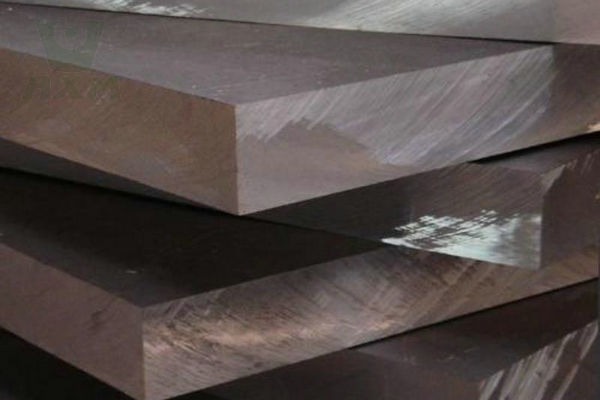When we talk about aluminum, properties like aluminum’s light weight, corrosion resistance, and recyclability might come to mind. In fact, aluminum is a very important metal that is used in many fields such as construction, aerospace, automobile manufacturing, and many others fields. However, in the process of using aluminum and its alloys, we must understand some basic properties of aluminum, including the melting point of aluminum.
Aluminum Basic Information
Aluminum's Historical Background and Discoverers:
Since then, French chemist Henri St. Clair de Vivaux and others have also successfully prepared aluminum, which marks that aluminum has become a metal that can be prepared on a large scale.
Aluminum Chemical Properties
Aluminum is a chemically very active metal, which easily reacts with non-metallic elements such as oxygen, sulfur and chlorine, and releases a lot of heat energy. Aluminum also reacts with many acids and bases, but it is generally relatively stable under neutral and slightly alkaline conditions.
Physical Properties of Aluminum
Aluminum is a lightweight metal with a density of 2.70 g/cubic centimeter, which is lighter than iron. It has a melting point of 660.3°C and a boiling point of 2519°C. Aluminum conducts electricity and heat very well, making it widely used in electronics and thermal management. In addition, aluminum is also a good reflective material with high refractive index and reflectivity, so it is widely used in mirror manufacturing, optical instruments and other fields. Aluminum also has good plasticity and workability, and can be prepared into products of various shapes by methods such as rolling, stretching and molding.
Melting Point of Aluminum
Definition of Melting Point of Aluminum
Determination of Melting Point of Aluminum
The melting point of aluminum can be determined by many different methods. Among them, the most commonly used methods are differential scanning calorimetry (DSC) and optical microscopy (OM). DSC is a method that uses the difference in temperature difference between a sample and a reference sample to determine thermal properties. OM uses a microscope to observe the melting point of the sample, and determines its melting point by observing the change of the aluminum sample during the heating process.
Experimental Data on The Melting Point of Aluminum
The melting point of aluminum According to experimental data, the melting point of aluminum is 660.3°C (933.4K). This means that when pure aluminum is heated to 660.3°C, it will start to melt and turn into a liquid. Note that this is the melting point of pure aluminum, if it is an aluminum alloy it will have a slightly different melting point as other elements in the alloy affect its melting point.
The melting point of aluminum has an important influence on the processing and application of aluminum and its alloys. For example, in aluminum processing, it is necessary to control the heating temperature according to the melting point of aluminum to ensure that the material will not melt during processing.
In the manufacture of aluminum alloy, we also need to determine the preparation conditions and melting temperature of the alloy according to the melting point of aluminum. In addition, in the application of aluminum, we need to know the melting point of aluminum, which also helps to determine the applicable range and temperature stability of aluminum and its alloys.
Factors Affecting the Melting Point of Aluminum
The influence of external conditions on the melting point of aluminum
The external environment also has a certain influence on the melting point of aluminum. For example, air pressure and air humidity can affect the melting point of aluminum. At high altitudes, the air pressure is lower and the melting point of aluminum is lowered accordingly. In addition, oxygen and moisture in the air may react with aluminum, causing an oxide layer and corrosion on the aluminum surface, which in turn affects its melting point.
Effect of impurity elements on the melting point of aluminum
In the production process of aluminum products, it is usually inevitable to contain certain impurity elements, which may affect the melting point of aluminum. For example, elements such as iron, copper and magnesium lower the melting point of aluminum, while elements such as lithium and manganese may increase it.
The effect of alloying on the melting point of aluminum
Alloying elements in aluminum alloys also affect the melting point of aluminum. Typically, the addition of alloying elements can significantly lower the melting point of aluminum, making it easier to the machine. For example, adding a certain proportion of silicon, magnesium, copper, manganese and other elements to the aluminum alloy can increase the strength and hardness of the alloy, and can also significantly reduce the melting point of aluminum.
In general, the melting point of aluminum is affected by many factors. By understanding these influencing factors, we can better control the melting point of aluminum and its alloys, so that they can be better used in various fields.
Applications and Prospects of Aluminum
Aluminum and its alloys are materials widely used in industry and daily life, and have broad application prospects. Here are a few points about aluminum applications and prospects:
Application of aluminum and its alloys in industry and daily life
In addition, aluminum and its alloys can also be used to manufacture new energy materials such as solar panels and fuel cells.
The influence of the melting point of aluminum on the application of aluminum and its alloys
We believe that the melting point of aluminum is one of the important factors for its application. Aluminum is widely used in manufacturing processes due to its low melting point and ease of processing. At the same time, alloying can further lower the melting point of aluminum and enhance its strength and hardness. For example, aluminum-magnesium alloys, aluminum-silicon alloys, etc., have been widely used in aviation, automobiles and other fields. However, we need to pay attention to the fact that aluminum alloys with low purity or excessive impurity elements may affect their melting point and processing properties.
Future aluminum research and development prospects
In addition, with the development of science and technology, people are also exploring new alloying elements and processing technologies to further improve the strength, hardness, and electrical conductivity of aluminum and its alloys. Therefore, the future development prospects of aluminum and its alloys are still very broad.
In Conclusion
In conclusion, aluminum is an important metal material with many excellent physical and chemical properties. Among them, the melting point of aluminum is an important factor in the application of aluminum and its alloys. In this paper, we introduce the relevant knowledge of aluminum melting point, including the definition, measurement method, experimental data, and influencing factors of aluminum melting point. In addition, we also emphasize the importance of the melting point of aluminum for the application of aluminum and its alloys. Because aluminum has a low melting point and is easy to process, aluminum and its alloys are widely used in various fields in industry and daily life.







